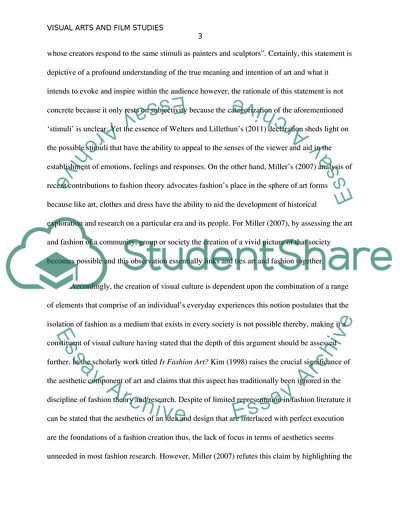Cite this document
(“The February 1982 cover of the most famous art magazine in the world, Essay”, n.d.)
The February 1982 cover of the most famous art magazine in the world, Essay. Retrieved from https://studentshare.org/visual-arts-film-studies/1628351-the-february-1982-cover-of-the-most-famous-art-magazine-in-the-world-artforum-reproduced-an-outfit-by-issey-miyake-the-magazines-editor-justified-it-by-arguing-that-fashion-is-an-element-in-a-larger-system-of-visual-culture-discuss
The February 1982 cover of the most famous art magazine in the world, Essay. Retrieved from https://studentshare.org/visual-arts-film-studies/1628351-the-february-1982-cover-of-the-most-famous-art-magazine-in-the-world-artforum-reproduced-an-outfit-by-issey-miyake-the-magazines-editor-justified-it-by-arguing-that-fashion-is-an-element-in-a-larger-system-of-visual-culture-discuss
(The February 1982 Cover of the Most Famous Art Magazine in the World, Essay)
The February 1982 Cover of the Most Famous Art Magazine in the World, Essay. https://studentshare.org/visual-arts-film-studies/1628351-the-february-1982-cover-of-the-most-famous-art-magazine-in-the-world-artforum-reproduced-an-outfit-by-issey-miyake-the-magazines-editor-justified-it-by-arguing-that-fashion-is-an-element-in-a-larger-system-of-visual-culture-discuss.
The February 1982 Cover of the Most Famous Art Magazine in the World, Essay. https://studentshare.org/visual-arts-film-studies/1628351-the-february-1982-cover-of-the-most-famous-art-magazine-in-the-world-artforum-reproduced-an-outfit-by-issey-miyake-the-magazines-editor-justified-it-by-arguing-that-fashion-is-an-element-in-a-larger-system-of-visual-culture-discuss.
“The February 1982 Cover of the Most Famous Art Magazine in the World, Essay”, n.d. https://studentshare.org/visual-arts-film-studies/1628351-the-february-1982-cover-of-the-most-famous-art-magazine-in-the-world-artforum-reproduced-an-outfit-by-issey-miyake-the-magazines-editor-justified-it-by-arguing-that-fashion-is-an-element-in-a-larger-system-of-visual-culture-discuss.


